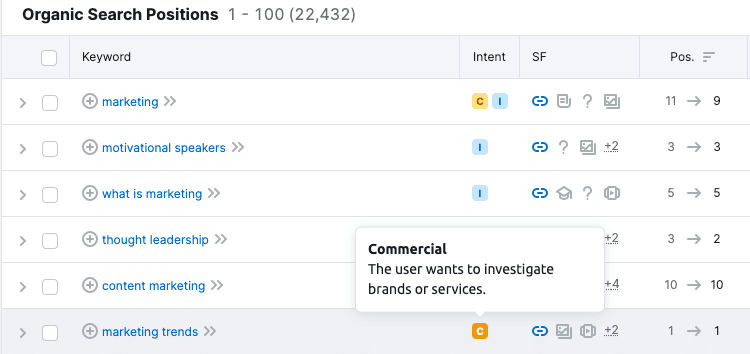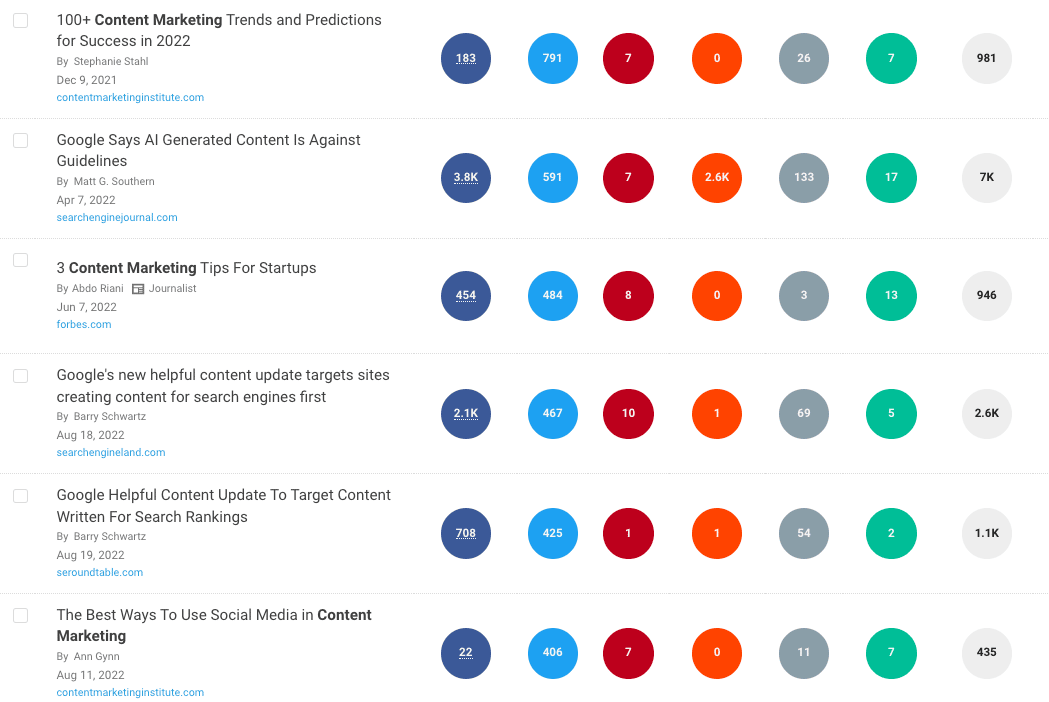
Marketers, SaaS founders and startup CEOs were pulling their money from ads and events and doubling down on content marketing.
Quick Takeaways:
- Spending your unused marketing budget on content marketing right now gets you a locked-in annual content plan before the year even starts.
- You’ll start the year with content that attracts relevant buyers and qualified leads and sales right out of the gate
- You can spend the rest of your budget next year on testing new promotion channels of campaigns focused on your company priorities
Why Use Your Unspent Marketing Budget On Content Marketing?
When I first joined SAP in the summer of 2007, I was asked to identify all the marketing programs that delivered actual leads, sales and ROI. I spoke to all my colleagues, I dove into our CRM, I poured over our reports.
And what I found astounded me: 62% of our marketing budget was spent on activities that drove ZERO leads for sales. Not one lead. From almost two-thirds of our regional marketing budget that was supposed to focus on, you guessed it, driving leads for sales.
These campaigns typically came at the direction of the VP of Sales for those segments: let’s get a full page in an industry trade publication. We need a brochure. How about some boondoggle events?
Which programs actually drove results the sales teams loved: content marketing. One-third of the budget delivered 100% pipeline our sales team was looking for.
And they were all annually-planned content marketing programs.
There were 3 big reasons why these programs worked so well:
- They strategically planned customer-focused content to be delivered across the entire year
- They allowed time for constant optimization of the program to deliver the right leads at the right time
- They created their plans and spent their budget before the year started
You see, sales people are funny. I know. I spent my first 5 years in sales. In the beginning of the year we want LOTS of leads we can nurture into sales opportunities so we can hit our sales targets.
At the end of the year, we want only highly qualified leads so we can focus what time we have left on closing deals.
So content marketing that’s planned out now, before the year is over, allows you to hit the ground running with a strategy in place before the year even gets started. It allows you to deliver value to the company right from the start, and it allows you to change and optimize as you go.
What If We Don’t Know Our Campaign Priorities Yet?
I’m so glad you asked. See, the problem with campaigns: they define what you decide is important. With SEO-based content marketing, we use objective research of the customer questions, keywords and concerns to decide what’s important.
We use trending data on what topics are important in your industry. We define what gaps you have with your competition to figure out what you need to be talking about.
Sure campaigns can be weaved into the content plan. No problem. But at least you have a strategy to build an audience for those big ideas that I’m sure will change the world. Definitely!
How To Use Your Unspent Marketing Budget
How and where should you place the dollars from your unused marketing budget? In this post, we’re sharing the simple 7-step process we use for our clients who spend their unused marketing budget on content marketing for next year. We also lay out the costs you should expect to incur.
1. Align To Your Business Strategy
First step is always to start with the business case for your content marketing. How does it align to your business goals, your overall marketing goals, and how will you measure those results in the terms your executive team understands.
2. Build The Content Marketing Measurement Framework
I always like to use the framework of Reach, Engage, Convert, and Retain to cover all stages of the buyer journey.
- Reach: attract new prospects or customers to your business. While some marketers like to think of this stage as awareness. I find that a really tough thing to measure and an easy way to blow through budget. With reach, you can actually count the hard number in terms of visitors to your website or landing pages.
- Engage: Are you building a relationship with these new folks. How many times do they visit? How long do they stay? How deep do they go?
- Convert: This is the stuff we love count. Did they fill out a form, register for an offer, buy the product? Content marketing leads are 62% cheaper than other types because of the way we attract them with valuable content vs ads or trickery or persuasion.
- Retain: Content marketing-generated customers are “better” because they stay longer and spend more. 4x more revenue Lifetime Value (LTV) from our research.
Now that you’ve identified the framework, you can move into the defining the actual measures of success. Whether you call the KPIs (Key Performance Indicators) or OKRs (Objectives and Key Results), simply metrics or reports, you can define which data points will show whether you are successful at building reach, engagement, conversion, and retention

3. Conduct Keyword Research and Topic Modeling
We start all our content planning with deep keyword research. While aligning to your business strategy is important, we find user-based research is more effective at driving marketing plans than internal opinions about which campaign messages are most important. We follow these steps:
- Identify important themes or categories of content you want to create
- Research your SEO rankings and positions against those “short-tail” keywords. For MIG, examples include might be marketing, content marketing, etc.
- Look at search intent such as commercial intent (see below)
- Identify competitive gaps and opportunities based on high CPC keywords

Source: Semrush
Bonus: Check out how we use CPC to identify high purchase intent and competitive gap keywords in my latest webinar.
4. Brainstorm 100 Article Ideas
I know this sounds like a lot, but trust me, this exercise is easier than it sounds. Here’s a few tricks:
- AnswerThePublic: Type any focus keyword into Answer The Public and it spits out this entire content plan based on common questions people ask their search engines related to that topic. This is why I wrote Why Content Marketing Is Important and Why Does Content Marketing Take So Long To Work because real people are asking these questions and Answer The Public told me to answer them.

- Buzzsumo: Type any search term into Buzzsumo (License required) and it spits out hundreds of ideas based on the content ideas that have been shared the most. Buzzsumo told me to write about content marketing trends, AI-generated content, content marketing tips for startups, and why social media alone isn’t enough for business growth.

So with Semrush, you’re using search intent. With Answer The Public, you’re using search query data. With Buzzsumo, you’re using social sharing data.
5. Plan Your Entire Year’s Worth of Content
Now you have a general sense of your business strategy for next year and how your marketing strategy will support it. you know what keywords your audience uses, what content they like to share, what competitive gaps you have, and what you need to create.
So let’s use some of that unused marketing budget right here at the end of the year to pay for next year’s content! Here’;s the approach we use to plan it out:
Ask your team each to rank from 1 to 4 which article ideas they love (ranked as a 1), which ones they hate (ranked as a 4) and everything in between (2 = like and 3 = meh). Average and weight those rankings across your team. If you have 100 article ideas, plan to publish the article twice a week across the year.
Make sure you balance out the content themes. Here’s an example from our MIG blog last year.

6. Make Sure To Optimize or Update Old Content
Go the search bar on your website and type last year into it. Surely you’ll have some articles about last year’s trends that you’ll want to update. Or maybe you have articles from 5 years ago that still get some decent traffic or conversions. If you delete those pages Google may penalize your website. So instead, use some of your unused marketing budget to update those old pages.
Start by searching for article with year’s on them. Look for articles that have high traffic but are older than 2 years. Look for articles that still get lots of conversions or rankings that are more than 3 years old.
Now create a plan to update those using some of last year’s leftover marketing budget! Updating old posts is one of the most effective ways to generate leads and revenue without having to spend money generating new conte t ideas or new articles.
7. Promote Your Content Through an Employee-Generated Social Media Campaign
Employee-generated content is one of the most effective ways to boost the value of your marketing budget. Why? Because your target audience is more likely to trust content from your employees than from ads. It’s also a great way to boost the personal brand of your employees who are interested. And who knows, maybe some of them will even want to start writing for you.

We call this employee activation: getting your employees to write and share your content. Not because you made them do it (never mandate this) but because they want to. Engaged employees who create and share content are able to generate 2x the click through rate as brand-shared content.
Source: Edelman LinkedIn study on thought leadership
How Much Does Content Marketing Cost?
The cost of content marketing ranges between $1000 and $10,000 per month depending on the variety of content types and the number of content pieces you need per month.
Our content packages are simple: we help our clients generate traffic and leads with an annual content plan and 1-2 blog articles per week. It’s simple and focused: 50-100 focus keywords, 50-100 creative article headlines, 1-2 blog articles per week, monthly Semrush tracking to prove that it works!
We charge $4,500 / month for 2 weekly articles. That’s just $54,000 for all of next year’s blog content. That is less than the cost of one event sponsorship or a month of PPC advertising. (If you’re interested, check out an ROI-focused case study, the success we see by using this service for ourselves and all our amazing G2 Reviews.)
The trick to setting up a marketing budget is like baking a cake, as Alex from Jotform tells us below. You have to have the right recipe, put the ingredients together, warm and the oven and you’re ready to go:
That’s why we shared our recipe for how to use your unspent marketing budget right now, to get the most delicious cake.
Why Spending Your Unused Budget On Next Year’s Content Marketing Makes Sense
As you can see, using any unspent marketing budget on next year’s content marketing is a great idea.
With MIG, not only do you get an entire year’s worth of content. But you start the year with a keyword strategy mapped to your buyer’s needs. You get 100 article ideas, weekly content to keep your lead machine humming along, and monthly reports you can share with your boss.
All this combined will bring the results you need next year. And it will already be paid for! That’s why now is the perfect time to spend that unused marketing budget on next year’s content marketing. When next year rolls around, you’ll look like a hero.
Do you want to use some of your unused marketing budget on content marketing. Our team of 35+ experienced writers are ready to produce content for YOUR business. Check out our weekly blog content service or schedule a free consultation.
The post Use Your Unspent Marketing Budget On Content Marketing For Next Year appeared first on Marketing Insider Group.


